|
|
A Look at Bug Tracking Using Bugzilla Robert Sievers manages QA on the development of Abi-Word, a cross-platform free-use open source word processor. When it came time to pick a bug tracking system, he looked into Bugzilla, the open source bug tracking system created by mozilla.org, and found that the open source development model worked just as well for QA tools as it does for utilities and applications.
|
|
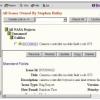 |
A Look at TeamTrack 3.0, a Web-Based Defect Tracking Tool George Hamblen and Stephen Bailey look at TeamShare's TeamTrack 3.0, a Web-based defect tracking tool. TeamTrack offers a fully functional defect tracking system over a company intranet. Since all of the functionality is offered from the server, this means each desktop needs only a browser to access the system.
|
|
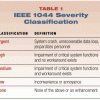 |
Tracking Severity: Assessing and Classifying the Impact of Issues (a.k.a. Defects) How does one categorize Severity? Should you use numbers like 1, 2, 3; generic names like High, Medium, Low; or more specific names? A telephone switching system, for example, might use industry-specific categories such as "system issue," "line issue," or "call issue." Other environments, as we'll see in this article, tailor classification terms to meet their own functional needs.
|
|
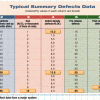 |
Software Measurement Programs A metrics program is any planned activity in which you use measurement to meet some specific goal. If you do not have a clear technical goal for a metrics program, then you are almost certainly not ready for such a program. Here's how to design a measurement program that leads to decisions and actions.
|
|
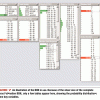 |
Bayesian Belief Nets: Predicting Defect Rates and Resource Requirements A Bayesian Belief Net is a graphical network that represents probabilistic relationships among variables. Here is a studied look at this causal modeling technique as applied to defect prediction and resource estimation.
|
|
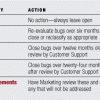 |
Organize Your Problem Tracking System Do you have a bug database or defect tracking system? Whether you call them PRs, CRs, SPRs, or some other acronym, logging your software problems into a database rates as one of the simplest yet most effective things you can do to improve product quality. Sometimes these databases turn into the electronic equivalent of a “roach motel” trap--the bugs go in but they don’t come out!
|
|
|
|
Software Bug Report Sample (template) This is a sample bug reporting template for accounting and financial software software that includes description, severity, priority levels, and bug solution categories.
|
|
|
|
When Test Drives the Development Bus Once development reaches "code complete," the testing team takes over and drives the project to an acceptable quality level and stability. This is accomplished by weekly build cycles or dress rehearsals. The software is graded based on found, fixed, and outstanding errors. Development strives to increase the grades in each build--improving the quality and stability of the software. Learn how to use this "dress rehearsal" process to build team morale, develop ownership by the entire development team, and ensure success on opening night.
|
Cindy Necaise, MICROS Systems, Inc.
|
|
|
Orthogonal Defect Classification at Cisco This presentation outlines the history of the Orthogonal Defect Classification system deployment at Cisco.
|
Bob Mullen, Cisco Systems
|
|
|
Categorizing Defects by Eliminating "Severity" and "Priority" With all of the advancements in defect tracking systems within the past few years, companies are still using the same ambiguous, canned fields known as Severity and Priority to categorize their defects. Let's examine a better way to assign importance to a defect.
|
|

